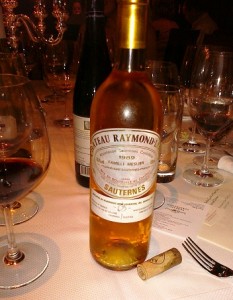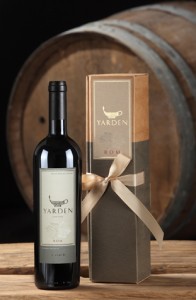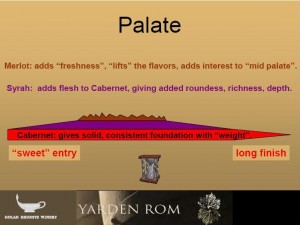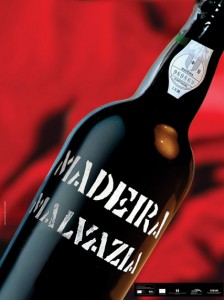 Season has arrived, keeping us busy with public classes, private group tastings and lots of fun wine events. Some recent highlights included a presentation on Long Island wines to wine club, It Was a Good Year, based in Poughkeepsie, NY; a presentation of our From Vine to Wine class held in conjunction with the Town of Riverhead’s Department of Recreation; and a jaunt “Around the Wine World in Six Glasses” for a bachelorette party in East Hampton. We return to the Hamptons for another bachelorette party this month.
Season has arrived, keeping us busy with public classes, private group tastings and lots of fun wine events. Some recent highlights included a presentation on Long Island wines to wine club, It Was a Good Year, based in Poughkeepsie, NY; a presentation of our From Vine to Wine class held in conjunction with the Town of Riverhead’s Department of Recreation; and a jaunt “Around the Wine World in Six Glasses” for a bachelorette party in East Hampton. We return to the Hamptons for another bachelorette party this month.
We also had the good fortune to visit to the Finger Lakes wine region in early May as part of Lenn Thompson’s TasteCamp East. This three-day extravaganza provided us with a fast and furious overview of this great wine region, which neither of us had truly visited despite Tracy having gone to Cornell University for school. If you get a chance to visit yourself, we highly recommend the trip.
Of course, for most of you, a much shorter trip will bring you to the haven that is the East End of Long Island, which has ramped up for 2010 and welcomes your visit. If you do head out our way, be sure to stop by to visit our vineyard and take a wine class. We will also be delighted to show you our new solar array, which is our latest step in going off the grid and being green.
Coming with a group? We can customize a private class or event for you to enhance your visit to the region – choose from our regular wine tasting classes or add a cheese tasting component to broaden your knowledge even further. We await you…
Drink wisely and well,
Tracy Ellen Kamens, Ed.D., DWS, CWE
CEO: Chief Education Officer
and
Jared Michael Skolnick
COO: Cork Opening Officer
FOR THE CELLAR
While most wine is consumed within 48 hours of purchase, there are good reasons to cellar your wine. No, that New Zealand Sauvignon Blanc likely won’t improve with age, but, many other wines will continue to develop in the bottle, revealing even more nuances and complexity upon opening. As they say, patience is a virtue, and truly, a well-aged wine can be a rewarding experience.
Which wines will age?
First, know that a vintage date is not akin to a freshness date – buying wine is very different from buying milk. An older wine is not necessarily a bad thing and in fact can be even better for having aged. That being said, wines that are intended to be enjoyed for their crisp acidity and fresh fruit flavors are best enjoyed young and should not be aged. Accordingly, keep tabs on your fresh, aromatic whites, roses and fruity reds and plan to drink them within three years of release.
Similarly, most white wines are meant to be enjoyed in their youth. However, high quality Chardonnays, Rieslings, Semillons and Chenin Blancs can develop nutty, toasty, honey and other more developed aromas and flavors that come through after the fresh fruit has faded. Red wines with good tannins are likely to be ageworthy due to their structure and, in fact, highly tannic wines generally require some ageing for the tannins to soften and become more enjoyable on the palate. As with their white counterparts, vibrant fruit will become more subdued as secondary and tertiary flavors come to the fore with dried fruits, earthy and herbal notes taking their place. In general, a wine with ageing potential will have enough fruit, acidity and structure. If these elements aren’t sufficiently present in the beginning, they will fade too quickly as the wine ages and the aged wine will be lacking on the palate. In addition, sugar and alcohol are great preservatives, so wines with high sugar contents and fortified wines can age beautifully such as Sauternes; Ports; and Auslese, Beerenauslese and Trockenberenauslese Rieslings.
Proper storage conditions
If you are laying down your own wines, be sure to store them under proper cellar conditions. Wines should be stored in consistent temperature between 50oF-70oF with some humidity to keep the corks moist in an area that is free from vibration and not exposed to light. Bottles with corks should be laid horizontally, to further aid in keeping the corks moist. If buying older vintages at an auction or retail, it is important to consider the storage conditions under which the wine has been since its departure from the winery. Whether ageing them yourself or buying aged wines, well-stored wines, with good providence, are more likely to be sound, although even under the best circumstances, there are no guarantees.
When to drink your aged wines
Deciding when to drink your aged wines is both an art and a science. Typically, if you have a case of a particular wine, you will likely drink a few bottles too soon and a few bottles too late and the remainder during the wine’s peak. It’s a good idea to check out vintage charts to see when wine experts, who are often tasting wines throughout the ageing process, think they are ready to drink (or if they think they are too young or too mature).
Serving older wines
Once you have selected to drink an older wine you should expect a few things such as sediment. The tannins and pigments will precipitate out of solution, falling to the bottom of the wine. Accordingly, older wines frequently need to be decanted. In addition, like leaving an apple slice on the counter, wines (especially white wines) will oxidize a bit with time and thus will change color. White wines will become darker, heading toward brown while red wines will lose color, shifting toward brick and orange tones. Finally, corks on older wines may be very fragile, thus, an Ah-So opener might be a better way to go than the usual cork screw.
Whether you prefer the vibrancy of newly released wines or the complexity of aged wines, open a great bottle and enjoy!
Tasting Notes
To further illustrate the discussion above, this month’s tasting notes include several of the same wines from different vintages, highlighting the changes that come with age.
Bott-Geyl, Pinot d’Alsace 2005, Alsace, France, $16.00
We featured this traditional blend of Pinot Auxerois, Pinot Blanc, Pinot Gris and Pinot Noir in our December 2008 newsletter. Now at five years old, it is showing some beautiful aged characteristics with the citrus and floral notes have given way to honey and toast. However, the wine’s richness and acidity are still very present.
Anthony Road Winery, Semi-Dry Riesling 2008, Finger Lakes (NY), USA, $15.00
This is their off-dry Riesling offering with approximately 21-25 g/l of residual sugar. Floral aromas dominate the nose while the off-dry palate provides vibrant acidity and peach/stone fruit flavors that linger throughout the wine’s long length.
Anthony Road Winery, Semi-Dry Riesling 2001, Finger Lakes (NY), USA
The same wine as the Riesling 2008, but with seven years of bottle ageing, the wine shows developing aromas of petrol. The palate is now drier and the ripe fruit has faded into notes of honey, toast and lime. The long length persists.
Beronia Gran Reserva 2001, Rioja, Spain, $22.00
Produced from 88% Tempranillo, 8% Graciano and 4% Mazuelo, the wine was aged for a minimum of 24-36 months in oak plus an additional 36 months in bottle to quality for the Gran Reserva label. Aromas of smoke, spice, herbal and bright berry greet the nose. The palate provides red fruit and leafy flavors and good, tannic structure.Nearly the same wine as the one above, this wine was produced from 100% Tempranillo. Its nose reveals dried fruits and herbal aromas, while the palate is dry with medium+ acidity. Flavors of herbs, red fruit and spice are beautifully developed.Another 100% Tempranillo wine, this is a good (or rather bad) example of what happens when you wait too long to drink your wines. Tasted right after the 1982 Gran Reserva, it was clear that this wine was past its prime with limited fruit and bitter notes on the palate. In contrast, the 1982 had a slightly oxidized nose, but still showed some flavors of bright fruit, dried herbs and dried flowers.
Beronia Gran Reserva 1994, Rioja, Spain, $53.00
Beronia Gran Reserva 1981, Rioja, Spain, $55.00






